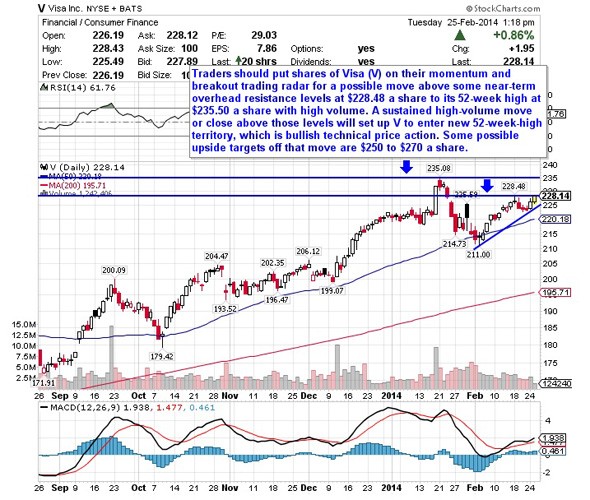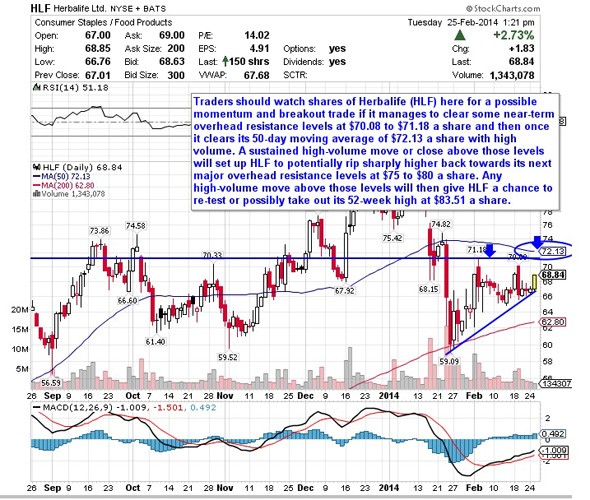Understanding Market Momentum Stockpickr! Your Source for Stock Ideas
Post on: 2 Июль, 2015 No Comment

By Jonas Elmerraji
Senior Contributor
02/15/11 — 04:44 PM EDT
BALTIMORE (Stockpickr ) — “Momentum” is a word that’s thrown about quite a bit in the financial world. To be sure, it’s one of the cornerstones of technical analysis, and it’s the foundation for some of the most profitable strategies in the history of the stock market. But it’s also a term that many aspiring traders fail to grasp definitively. Today, we’re going to take a look at precisely what momentum means, and how you can add a momentum study to your next trade.
In physics, momentum is a measure of the force of an object’s movement. In the trading world, that definition isn’t far off. To a market technician, momentum is the acceleration of a stock’s price movement, and it’s one of the key determinants of a stock’s behavior.
It’s long been observed that stocks with strong momentum in one direction or another are likely to stay in their direction (a key element of the concept of trends). If you’ve been in the market for a while, that probably rings a bell — even barring any sort of news, hot stocks can continue to rally, and poor performers can continue to get shellacked.
More From Stockpickr
Like many elements of technical analysis, momentum has a lot to do with investor psychology. As shares of a strong performer continue to climb in price, new investors jump aboard, hoping to duplicate the performance that preceded their buying. Likewise, it’s often when stocks are at their lowest that desperation sellers start to unload their positions. Without some sort of objective measures of momentum, the cards are statistically stacked against market participants during volatile conditions.
But using momentum indicators, technical traders can often get a better sense of when to buy and sell. Like any other element of technical analysis, momentum indicators don’t have magical predictive powers. Instead, they’re a tool that traders use to guide their contingent expectations.
And traders who use them properly can make some astronomical gains. In some way, momentum plays a role in the trading strategies of every successful stock, commodity, futures or forex trader I’m familiar with. So with that, let’s take a look at how to use three of the most popular momentum oscillators.
Understanding Oscillators
An oscillator is any indicator that’s bounded by some sort of fixed scale. While not all momentum indicators come in the form of oscillators, they’re the most popular way to interpret a stock’s momentum.
One reason for their popularity is the fact that oscillators can give clues as to when that momentum has run its course. There are two types of oscillators, those bounded by high and low extremes, and those bounded by a baseline number of zero. Today, we’re going to look at two of the most popular oscillators: MACD and RSI.
The Moving Average Convergence Divergence Oscillator, or MACD, is known as a centered oscillator because its baseline value is zero. Simply put, this indicator measures the difference between the 12-day and 26-day exponential moving averages of a stock (these moving averages, or EMAs, are weighted average prices of that stock over the last 12 and 26 days, respectively). The “signal line,” graphed alongside the MACD, is a 9-day EMA of the MACD itself — the behavior of those two lines together is what technicians look at.
While that all sounds complicated (I’ll spare you my calculus example this time), putting it into practice is less daunting. Take a look at the chart below, which shows the S&P 500 above, with its MACD below.
When the MACD line (black) crosses above the EMA (red), a bullish signal is produced; If it crosses below the EMA, a bearish signal is produced; And when the two move far apart from each other (divergence), it signals the end of a trend. The MACD’s positioning matters as well — remember, it’s composed of two moving averages.
If the MACD line is positive, the trend is upward. When it’s negative, it’s signaling a negative trend. Putting those concepts to work on the chart of the S&P above, it’s clear that buying on bullish crossover signals, and selling on bearish signals would have played out fairly well in the last few months.
Relative Strength Index
Another popular indicator is the Relative Strength Index, or RSI. This indicator is a bit less complicated than the MACD, but no less important. In brief, the RSI is a measure of a stock’s recent gains relative to its recent losses. You can see an example of an RSI graph in the S&P chart above the price area.

One of the first things you’ll likely notice is the fact that RSI is a banded oscillator — in other words, it’s got a maximum value of 100, and a minimum of zero. As a result, when the RSI gets close to one of those numbers, it’s often a good indicator that a stock’s momentum is becoming finite. Generally, when RSI climbs above 70, a stock is considered overbought — and it’s considered oversold on a slide below 30.
Taking a look at our S&P 500 chart, the index has seen very high RSI numbers, a sign that we’re in a definitive uptrend. It’s also easy to spot the few times that RSI has become overbought on the daily chart. Each of those times has been met with either a pullback or sideways consolidation to bleed off momentum.
Because the concept of momentum is so crucial to technical analysis, it’s not surprising that there are far more indicators than we could ever hope to cover in this short primer. That said, many are built on, or in some way similar to the two that we’ve looked at today – the key is finding the ones that work for you. Of course, the key is to put them to work; your preferred charting program (be it a free website like Stockcharts.com, or your broker’s trading platform) should be able to display customizable momentum indicators without too much trouble.
Next week, we’ll add to your technical repertoire with another primer that will bring you closer to implementing technical analysis for your portfolio.
In the mean time, do you have a burning technical analysis question? Get it answered by heading to Stockpickr Answers .
RELATED LINKS:
>>Must-See Charts: Apple, Ford, SPY
>>Understanding Fibonacci Levels
>>3 Technical Setups for the Week
Jonas Elmerraji, based out of Baltimore, is the editor and portfolio manager of the Rhino Stock Report, a free investment advisory that returned 15% in 2008. He is a contributor to numerous financial outlets, including Forbes and Investopedia, and has been featured in Investor’s Business Daily, in Consumer’s Digest and on MSNBC.com.














